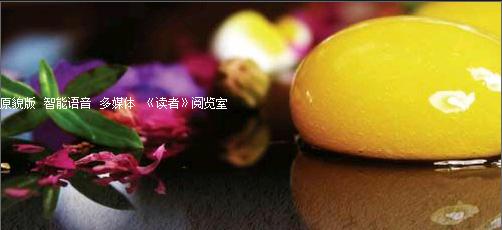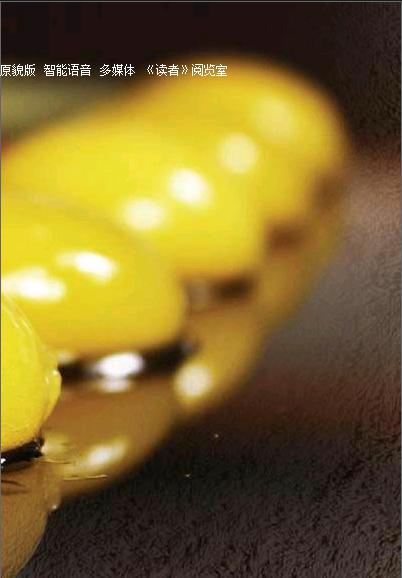Modlecular Gastronomy: Science And Cooking Skills



Chef and chemists have a lot in common, all of them are engaged in the communication with various compound and chemical reaction. The “cuisine esoterica” that spread from mouth to mouth, from the point view of chemists, they are just various subtle and coincident chemical reaction. When people have the idea of handling those food materials from chemical aspect, then they can make marvelous modlecular gastronomy.
Where does modlecular gastronomy come from?
It was in 1988 that one of my good friend, Nicholas Kurti, a physics professor in Cambridge University, who is fond of cuisine, and a Frenchman, named Hervé This , put forward a new discipline---molecular and physical gastronomy. This was because two of them have a hobby of cooking and like collecting and studying cuisine esoterica and Nicholas Kurti had said” it is a time when we can measure the temperature of Venus atmosphere, but we dont why the desert is so delicious, what a pity!”
Later, Hervé This simplified the term into molecular gastronomy, and he insisted that it should be a discipline because it is about understanding the physical and chemical features of the molecule of food materials in a scientific manner. It is a science to study the theory behind the cuisine esoterica. While it involves into another field when it comes to cooking gourmet that can give you ultimate experience of tastes by applying these theories and technological innovation to cooking, the new filed was called molecular cooking by Hervé This.
Molecular gastronomy has been a new trend across the world over 20 years. Scientists and chemists work together to let food surpass the ingrained perceive and imagination, bringing us new sensory stimuli, such as vision, gustatory sense, even tactile. What technologies have been employed into molecular cooking? What charm does such food have?
Turn liquid into ball
—technique of nodulizing
If you go to a restaurant of molecular gastronomy, there is a colorful caviar, always your first choice, which looks no difference from common caviar except that it is colorful. You can gain an unexpected flavor of fruits when you eat it. Such common approach is called technique of nodulizing, also named capsule technique.
The technique was first introduced in a Spanish restaurant, called bulldog, in 2003. Employing a certain supplementary materials to achieve gelation of liquid, the approach can make spherical objects of different types and sizes, such as caviar, egg, dumpling, wonton and other stuff. Seaweed gel , also called alginate, is the most important supplementary material in the technique of nodulizing, which is a componet of polysaccharide structure, abstracting from brown seaweed.
Nodulizing can be classified into two kinds: namely, positive and negative. The positive method is to make seaweed gel dissolve in fruit juice or vegetable juice, and then drop the mixture into calcareous solution, and liquid surface of each drop will become colloid, thus its shape and structure will be stable, looking like one single roe after another single roe. While negative method is to freeze fruit or vegetable juice containing caicium into a ball, then put it into the solution of seaweed gel, thus surface of the ball will turn into colloid while the liquior inside will be kept from sodium alginate and still remains its liquor state. In this way, the ball is larger, like a yolk or rice dumpling. Take mango capsule for example, looking like a raw yolk, the outer surface is membrane of colloid, while inside is strong and aromatic mango juice, providing the people a very special flavour.
A kitchen
resembling library
---various molecule cuisine skill
Nodulizing technique is a very common cooking method in molecular gastronomy, and there are many other techniques, using a certern cooking food materials by chemical and physical theory to gain a very special taste and fresh experience.
The vacuumcryogenic technology usually refers to cooking food with a temperature below 70 degree in vacuum, especially suitable for the food materials with high requirement in mouthfeel, such as goose liver, salmon, high-quanlity beef and others. This approach can save the loss of water and weight of food materials while remain its orginial flavor.
Froth technique is to produce a kind of fine and smooth but strong bubbles by putting lecithin into the liquor and then velocity mixing. Such bubbles can be made into various flavors as required, such as red wine, white wine and fruits, it can also be served as eidble supplementary
New taste from cold fried
by liquid nitrogen
The technique of liquid nitrogen is to use low temperature of 196 below zero of the liquid, then put food materials and cooked under the circumstance to make surface of materials cooling within a short time, by doing so, the dispositon of food materials have been changed and liquid turned into solid state. In this way, chefs can make ice ball, ice slush, smoothie, food crackling, or they can cook hot dishes in a cooling way.
Smoky Gourmet
In terms of cooking, smudging technique is input special-made smoke into a sealed container filled with food, and then have a quick smudging, in this way, special flavor has been added without destroying the shape and quality of the food materials, and eating with a special mouthfeel. While enjoying the wonderful dishes, the misty smoke can add more visual effect. There are many other techniques to make molecular gastronomy, which breaks the tradtional ways such as frying and decocting, it employs the method that mostly used in laboratory and provide more scientific elements to traditional cuisine.
Molecular Gastronomy
Is Not Far Away from Us
Though sounds like alien, molecular gastronomy is not that far away. We Chinese began to make molecular gastronomy about 2000 years ago, a strong proof is Chinas traditional bean curd, started in the Western Han Dynasty(206 B.C.—A.D. 24), is processed by chemical and physical methods to change its molecular structure, the theory of which is totally same with molecular cooking nowadays. Another example is cotton candy preferred by children, it was made by centrifuge technology of machinery equipment to realign the molecular structure of granule sugar, but its structure has not been changed, so it is with its taste. These techniques are commonly used in modern gourmet.
Nowadays, molecular gastronomy still seems to be a new thing to common people, in most Chinese restaurants, such food is not popular among the public. One reason is that it is popular in fashionable restaurants, high-end chamber and high star-level hotel, still remains unknown to average consumers; the other reason is that people dont have a full understanding of molecular gastronomy, whats more, it is very pricy for the equipments and materials to make such food, so it needs time to be accepted by the public. However, more and more people begin show their interest in such food, maybe in the near future, this kind of strange gourmet will bring more fresh experience to more common consumers.
Scientific consultan: Li Yingting,
Edited by Leng Linwei

